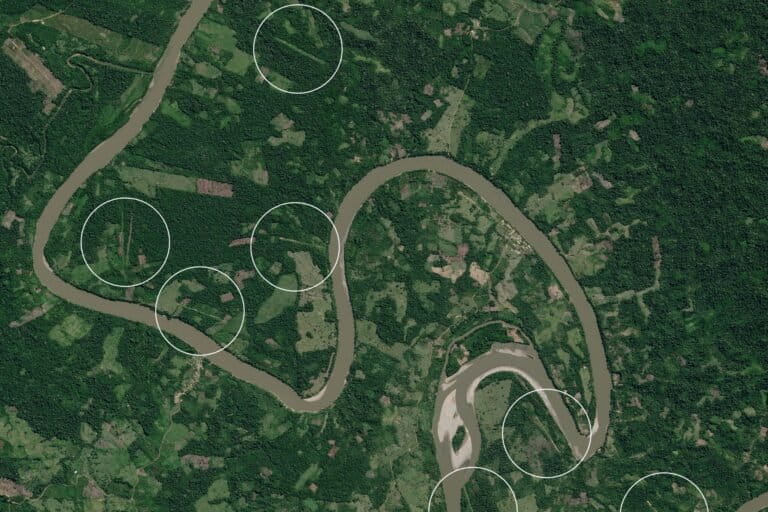- A new study suggests the ocean will begin emitting CFC-11 by about 2075, and that there will be detectable amounts of the chemical in the atmosphere in the first part of the 22nd century.
- Climate change will likely exacerbate the process, turning the ocean into a source of CFC-11 earlier than expected.
- Since the Montreal Protocol was signed in 1987, CFC-11 emissions have sharply dropped, but some studies have found that there is still a small amount of CFC-11 being released into the atmosphere each year.
- While the ozone layer is currently not threatened on a global level, experts say that more research is needed to understand future threats.
In 1987, world leaders signed the Montreal Protocol in an attempt to curb the amount of chlorofluorocarbons (CFCs) and other harmful chemicals being released into the atmosphere, which have been linked to the depletion of the life-preserving ozone layer in the Earth’s stratosphere. Overall, the agreement seems to be working. While CFC emissions peaked in the late 1980s, levels have mostly been going down, and research has shown that the hole in the ozone layer over Antarctica is slowly recovering.
But a new study in the Proceedings of the National Academy of Science suggests that the ocean will soon become a source of CFC-11, one of the primary chemicals responsible for ozone depletion.
Right now, the ocean primarily acts as a repository for CFCs, drawing these water-soluble chemicals — once used in refrigerants, insulation and aerosol cans — from the atmosphere and sequestering them in the deep sea. But that will change in about 50 years, according to the study. Around 2075, there will be a “reverse flux” of CFCs from the ocean into the atmosphere, says lead author Peidong Wang.

“There’s always been equilibrium between the atmosphere and ocean,” Wang, a researcher at the Massachusetts Institute of Technology’s (MIT) Department of Earth, Atmospheric and Planetary Sciences, told Mongabay in an interview. “When [CFC] emissions go down, the concentration in the atmosphere also goes down. And when the concentration in the ocean is higher than the concentration in the atmosphere, [CFCs] will come back [out of the ocean].”
Wang said future CFC-11 emissions from the ocean will be “fairly small,” and should “not have a significant impact on the ozone hole recovery.” However, he said more research needs to be done to see if other ozone-depleting substances will have a more significant impact on the ozone hole recovery.
The researchers say there will be “detectable” amounts of CFC-11 from about 2145.
“By the time you get to the first half of the 22nd century, you’ll have enough of a flux coming out of the ocean that it might look like someone is cheating on the Montreal Protocol, but instead, it could just be what’s coming out of the ocean,” co-author Susan Solomon, the Lee and Geraldine Martin Professor of Environmental Studies at MIT’s Department of Earth, Atmospheric and Planetary Sciences, said in a statement. “It’s an interesting prediction and hopefully will help future researchers avoid getting confused about what’s going on.”
In the late 1980s, CFC-11 emissions experienced a peak of approximately 300 gigagrams per year. While CFC-11 emissions have plummeted since the Montreal Protocol, a 2018 study found that CFC-11 emissions had increased by about 13 gigagrams each year from 2012, and identified activity in eastern Asia as a possible source of these emissions. A couple of months later, a report by the Environmental Investigation Agency (EIA) found that 18 companies in China were using foam insulation that contained CFC-11. Other studies have also pointed toward China as an emission source of CFC-11.

But according to Wang, current emission estimates might be overstated since the ocean is absorbing an increasingly small amount of CFC-11 each year as it becomes “oversaturated” with the chemical.
The study also suggests that climate change will exacerbate the issue, turning the ocean into a source of CFC-11 10 years earlier than expected. This is because warming water will make the ocean a weaker reservoir for CFCs, allowing outgassing to occur more easily. But this process is not dependent on climate change, the researchers say.
“Even without a warming climate, we will also expect the ocean to be emitting CFCs,” Wang said.
Stratospheric ozone depletion is one of the nine planetary boundaries identified in 2009 by a group of international scientists, led by the Stockholm Resilience Centre’s Johan Rockström and Australian National University’s Will Steffen. Each “boundary” refers to an Earth system process that is essential in regulating the stability and resilience of the planet, but has an environmental limit for which it can tolerate changes, mostly from human activity.
Owen Gaffney, a global sustainability analyst at the Stockholm Resilience Centre, says the ozone layer was identified as a planetary boundary as it’s a “critical part of the Earth system” that shields the planet from harmful ultraviolet-B (UV-B) radiation from the sun and has allowed life to evolve on land.

“The planetary boundary for ozone has been set at a global level,” Gaffney told Mongabay in an email. “The team assessed that it would be unwise to reduce the amount of ozone in a column of atmosphere by more than 5 percent.”
The planetary boundary for the ozone layer is set at a minimum thickness of 275 Dobson Units (DU). While the Earth is considered to be currently within the safe operating limit of the ozone boundary, the boundary is transgressed at a regional level in Antarctica each austral spring, when it falls to about 200 DU, according to research.
Gaffney says the ozone layer may make a full recovery due to the actions prompted by the Montreal Protocol, but that the “risk of surprises” could still endanger the stratospheric ozone layer.
“Ozone depletion was caused by a class of chemicals called CFCs containing chlorine and used in refrigerators,” Gaffney said. “What’s really interesting is that they could have easily contained bromine instead of chlorine — the chemicals are interchangeable. When it comes to destroying ozone, bromine is 45 times as ferocious as chlorine. The situation could have been far more serious before we even realised it. There are an estimated 100,000 substances used in the global economy. We really don’t know how many of them interact with one another.”
The new research highlights another risk, he said: “Our understanding of the long term reservoirs of ozone depleting substances is incomplete.”
Citations:
Montzka, S. A., Dutton, G. S., Yu, P., Ray, E., Portmann, R. W., Daniel, J. S., … Elkins, J. W. (2018). An unexpected and persistent increase in global emissions of ozone-depleting CFC-11. Nature, 557(7705), 413-417. doi:10.1038/s41586-018-0106-2
Rigby, M., Park, S., Saito, T., Western, L. M., Redington, A. L., Fang, X., … Young, D. (2019). Increase in CFC-11 emissions from eastern China based on atmospheric observations. Nature, 569, 546–550. doi:10.1038/s41586-019-1193-4
Rockström, J., Steffen, W., Noone, K., Persson, Å., Chapin III, F. S., Lambin, E., … & Foley, J. (2009). Planetary boundaries: exploring the safe operating space for humanity. Ecology and Society, 14(2).
Strahan, S. E., & Douglass, A. R. (2018). Decline in Antarctic ozone depletion and lower stratospheric chlorine determined from Aura microwave limb sounder observations. Geophysical Research Letters, 45(1), 382-390. doi:10.1002/2017gl074830
Wang, P., Scott, J. R., Solomon, S., Marshall, J., Babbin, A. R., Lickley, M., … Prinn, R. G. (2021). On the effects of the ocean on atmospheric CFC-11 lifetimes and emissions. Proceedings of the National Academy of Sciences, 118(12), e2021528118. doi:10.1073/pnas.2021528118
Banner image caption: Orbicular batfish in Komodo. Image by Rhett A. Butler.
Elizabeth Claire Alberts is a staff writer for Mongabay. Follow her on Twitter @ECAlberts.
FEEDBACK: Use this form to send a message to the author of this post. If you want to post a public comment, you can do that at the bottom of the page.














